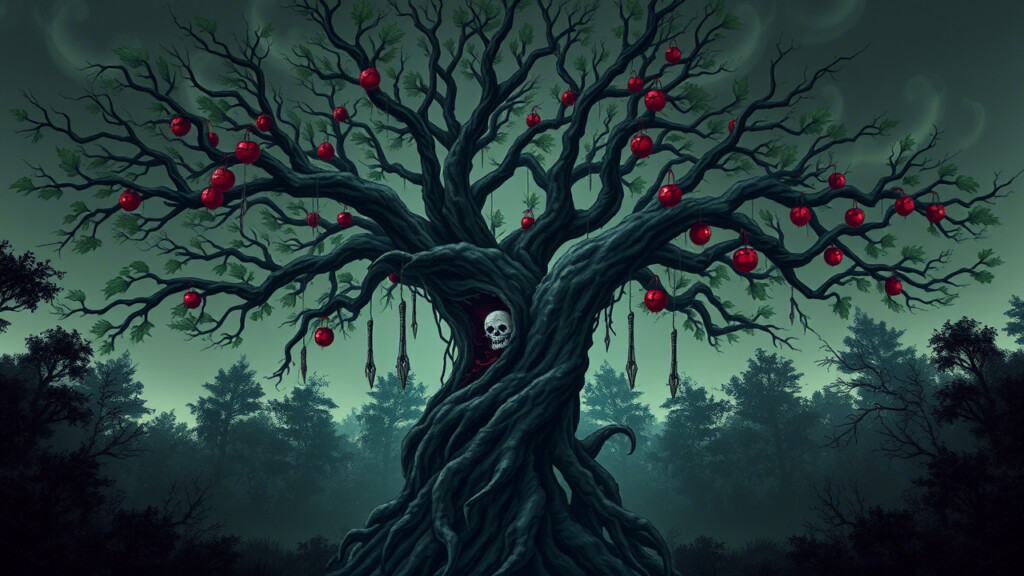Have you ever wandered into a dense forest where the canopy blocks out the sunlight? Some say that certain trees do not just absorb water from the earth—they thirst for something else: human blood. In the legend of the Jubokko, this tree is not merely an ordinary plant but a sinister entity with a dark hunger.

Whispers from the Dead
According to legend, the Jubokko emerged from ancient battlefields, where the ground was soaked with blood and the spirits of the fallen remained unsettled. Its gnarled roots do not seek water or nutrients from the soil but instead cling to corpses, draining them of their lifeblood.
At first glance, it appears like any other old tree. But should an unsuspecting traveler touch it, its branches will suddenly stretch out, tightening around its victim like the tendrils of a monstrous entity. It is said that if one cuts a branch from this blood-sucking tree, instead of sap, it will bleed with a crimson liquid resembling human blood.
Jubokko in Japanese Spiritual Beliefs
In Shinto belief, nature is more than just trees and plants—it is home to spirits known as kami. The Jubokko is not just a terrifying folktale but a manifestation of vengeful spirits unable to find peace, bearing the resentment of bloodshed.
People once believed that forests near battlefields needed purification rituals to prevent them from becoming dwelling places for the Jubokko and wandering souls.
Beyond the supernatural, the legend of the Jubokko carries a deeper message: nature can nurture and protect humanity, but it can also exact vengeance when it is defiled.
Truth or Myth?
There is no scientific evidence of a blood-drinking tree, but nature does have plants with eerie survival mechanisms:
- Mistletoe (Viscum album): A parasitic plant that attaches to host trees, drawing nutrients—much like how the Jubokko is said to drain life from humans.
- Nepenthes & Drosera: Carnivorous plants that trap and digest insects, mirroring how the mythical blood-sucking tree “devours” its victims.
- Manchineel Tree (Hippomane mancinella): Its sap can cause severe burns upon contact, reminiscent of the lethal embrace of the Jubokko.
Could the legend of the Jubokko have originated from real plants, later mythologized over time? Or is it a cautionary tale about deadly forests, forever marked by the horrors of war?
Jubokko in Popular Culture
The Jubokko legend is not just confined to folklore—it has also found its way into art and entertainment:
- Edo-period Ukiyo-e prints depicted eerie forests where trees stretched out like demonic hands.
- In the game Nioh, the Jubokko appears as a monstrous tree yokai with the ability to drain blood, much like the eerie presence felt in Aokigahara Suicide Forest, where restless spirits are said to linger.
- The Shin Megami Tensei series includes the blood-sucking tree as part of its demonic bestiary, emphasizing its supernatural and vengeful nature.
No matter the interpretation, the Jubokko remains a symbol of war, suffering, and nature’s wrath.
This legend is both terrifying and thought-provoking. It might be pure fiction, or it could be a warning echoing from the past.
And if you ever find yourself lost in the woods, only to feel something reaching out to touch you… don’t turn around. It may not be just an ordinary branch.
